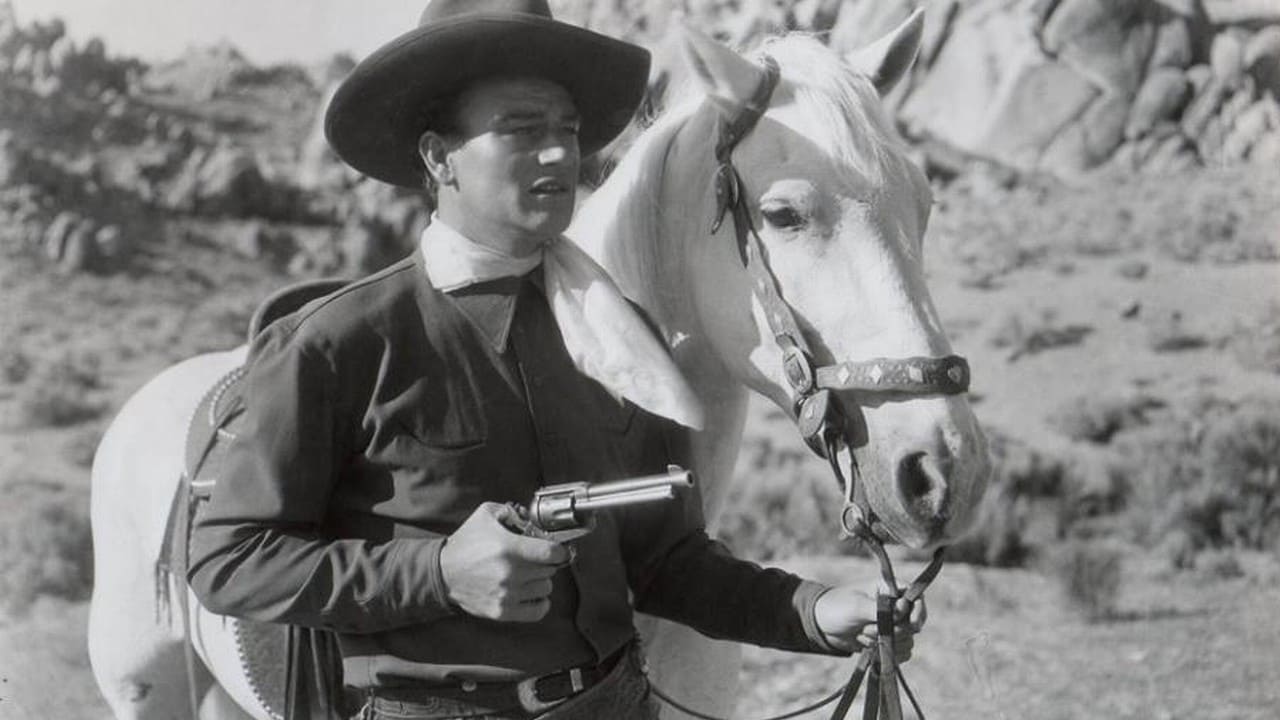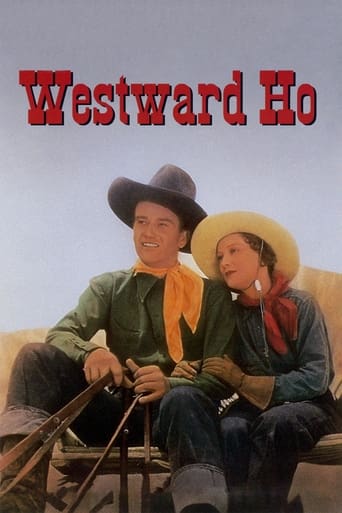


Cheapie western starring John Wayne as a cowboy who forms a group of singing vigilantes, slinging bullets and ballads across the West. Meanwhile his long-lost brother has saddled up with the wrong crowd. Nonsense from start to finish, and sadly never as much fun as the plot description makes it sound. It's dullsville. And don't even get me started on that ending! What was the point of the brother plot if it was going to end like that?
... View Morefirst, we got people singing a song like watching a play on a stage. then the funny things showed up one by one. by watching this 1935 film i was unable not to think about what the hongkong shaw brothers did to their Chinese kung-fu movies, always with stupid screenplays, weird attires, costumes, hairdos, make-up, terrible acting... pretentious and unrealistic dialog.....all of those horrible arrangements shown in shaw brothers kung fu movies were accidentally matched this pathetic western genre b movie. all the people in this pioneering westward movie wore nice, clean and ironed costumes, even in gunfights, good guys led by john wayne were riding on white horses, wearing white shirts, while the bad guys' horses were just a mixture of different colors. there were so many laughable and pretentious scenes and dialog in this horrible film.
... View MoreThis wonderful example of the early B western is tarnished by some pitiable horse falls that would not be tolerated in today's films. Two scenes in particular show the poor animals somersaulting and going down in a horrendous heap, sometimes on top of one another. Even knowing that the movie is over 70 years old; the sight of the poor animals in such distress still made me heart sick. The Running W appears to have been used liberally in this picture, which is otherwise well acted and produced. John Wayne gives an excellent performance along with a strong supporting cast, while the Owens Valley and Alabama Hills outside Lone Pine provide a realistic backdrop to the story.
... View MoreWestward Ho finds the Duke on the trail of as many outlaws as he can kill or capture in search of the gang that killed his parents and kidnapped his young brother.A prologue to the main film finds the young Wyatt boys on the trail with their parents while they were driving their cattle herd to market. The young Duke is thrown clear from the wagon and thought killed and the brother is taken by outlaw leader Jack Curtis.When the boy grows up to be John Wayne, he's got himself a mission. In a premise similar to the Lone Ranger, Wayne with official territorial permission organizes his own group of law enforcers called the Vigilantes. So they know each other in a fight with large outlaw bands, Wayne has them dress in black, but ride white horses. The get up isn't for style and Wayne instead of one lone Indian sidekick has forty or so men who have sustained similar family losses.Of course as things go he does eventually meet up with his grown up brother and the gang that kidnapped him. For what happens you have to watch Westward Ho.Hardly the best or the worst of Wayne's Poverty Row oaters. In fact Westward Ho has some nice production values because it is shot on location and not on the studio back lot. Unusual for a B western of the Thirties.Not of course to be missed by the many fans of the legendary Duke.
... View More